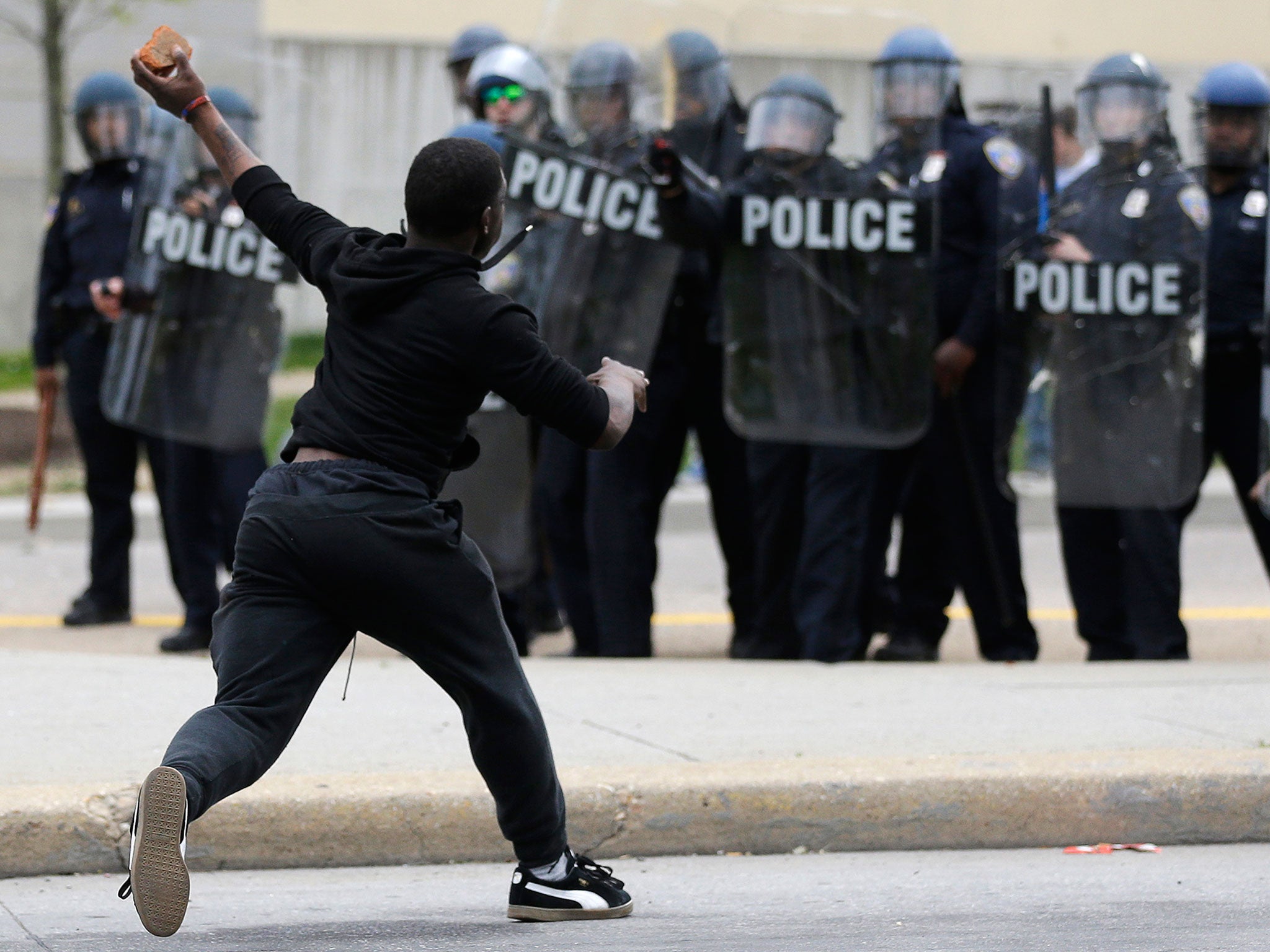Who was Freddie Gray and what caused a Baltimore neighbourhood to turn on itself?
There were many Freddie Grays in Baltimore, say commentators

"A riot is the language of the unheard."
The words of Martin Luther King, first made in 1966 during an interview with Mike Wallace of CBS, echoed around the streets of Baltimore today as people sought an explanation for the violence that wrecked part of the city and stunned the nation.
Community leaders, to a person, said the rioting and looting could not be condoned and many drew a sharp distinction between those who had for many days engaged in peaceful protests in the aftermath of the death of Freddie Gray and the violence that erupted on Monday afternoon.
At the same time, commentators pointed to a divided city, a community where not everybody felt included and did not feel they were part of so-called Charm City.
They pointed to figures that revealed a police force that had paid out more almost $6m since 2011 to suspects against whom they had used unnecessary force, of unemployment rates among some sections of the community that reached 70 per cent.
Some young black people, they suggested, feel as disenfranchised and disengaged as their counterparts did in April 1968 when riots broke out in the city - and in more than 100 cities across the country - in the aftermath of the assassination of Dr King.
Dan Rodericks, a columnist for the Baltimore Sun, reminded his readers that back in the 1980s, Billy Murphy, a man who now serves as the lawyer for the family of Freddie Gray, ran for mayor, raising the issue of "the other Baltimore - the one you can't see from the Inner Harbor — the poor and broken Baltimore that never seemed to get the attention it needed".
Mr Murphy again raised the issue himself, telling a CNN anchor that she needed to get past the "blame game".
When it was put to him that some of those who had been hurling stones at the police on Monday were aged no more than 13 or 14, he replied: "That shows the level of alienation that exists. That does not justify it, but it explains it."
He added: "I think it is more important to ask 'why' in these circumstances."
Who was Freddie Gray, and where was he from?
Gray was arrested on 12 April and died a week later of a spinal injury he allegedly sustained either while being arrested or while being transported in the police van. The 25-year-old’s funeral on Monday was followed by violent riots and looting, leading the mayor to announce a week-long curfew and public schools to shut their doors on Tuesday.
The rioters set police cars and buildings on fire in several neighbourhoods, looted a mall and alcohol stores, set fire to shops and buildings, and threw rocks at police with riot gear.
Gray was raised in Sandtown-Winchester, a poverty-stricken area of west Baltimore where almost 50 per cent of residents are unemployed. A third of properties in the neighbourhood are abandoned and a quarter of families receive Temporary Assistance for Needy Families (TANF), statistics from the Justice Policy Institute (JPI) show.
He was living off a pay-out from a lead-paint lawsuit filed on his behalf and on behalf of his two sisters against the owner of their child-hood home, according to the Washington Post.
It quotes court-papers citing walls and windowsills containing enough lead to "poison the children and leave them incapable of leading functional lives". Over seven per cent of children living in this area aged six and under have elevated blood-lead levels, the JPI's statistics show.
The median household income for this area is substantially lower than the national average of America, with each home surviving on just $24,000 (£15, 700) yearly.
The escalating situation has been compared to unrest in Ferguson after the death of black teenager Michael Brown at the hands of a white police officer. Ferguson is another area blighted by poverty, with data showing one in four families living below the federal poverty line in 2012.
Life in Sandtown-Winchester
Subscribe to Independent Premium to bookmark this article
Want to bookmark your favourite articles and stories to read or reference later? Start your Independent Premium subscription today.

Join our commenting forum
Join thought-provoking conversations, follow other Independent readers and see their replies